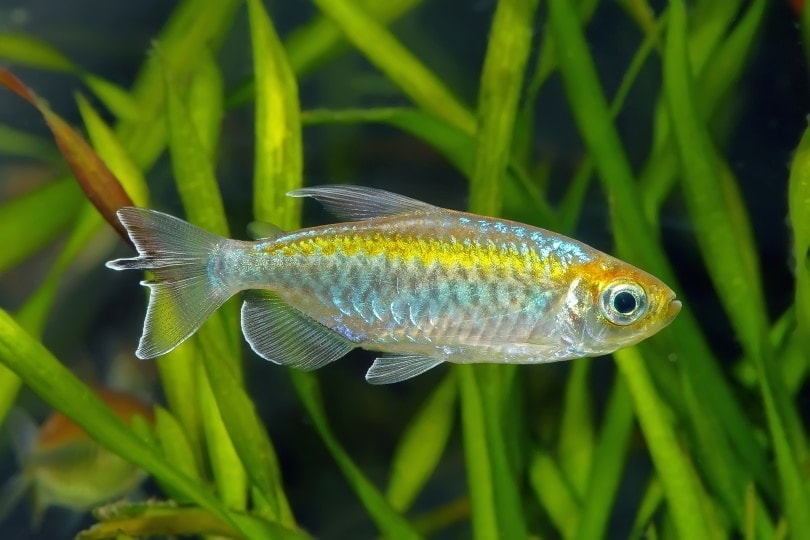How Do Fish Communicate With Each Other? Aquatic Facts & FAQ

Updated on
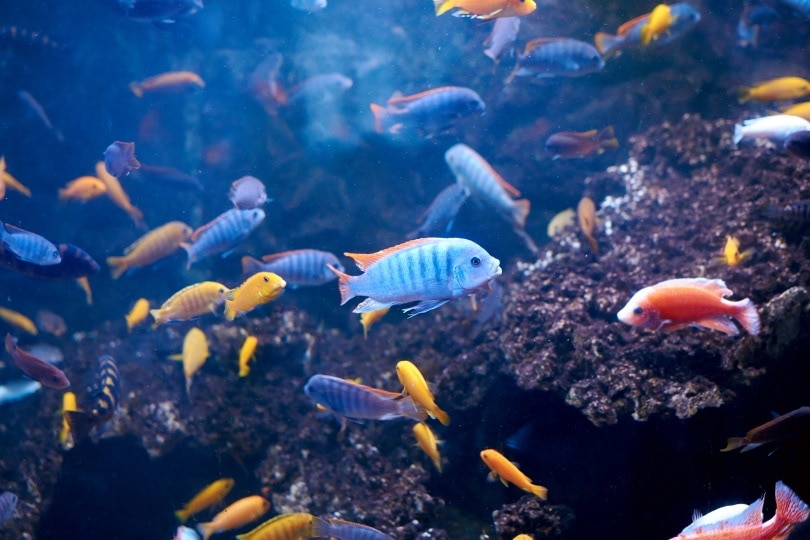
Humans have various ways to communicate with one another, from in-person conversations to social media chats to video conferencing. Animals may not benefit from our technology, but they have evolved numerous ways to communicate with each other, and in some cases, with other species.
Most people think of fish as “simple” creatures, but when it comes to communication, they use a range of forms. From bioluminescence to electrical impulses, find out more about how fish communicate with each other.
Communicating With Sound
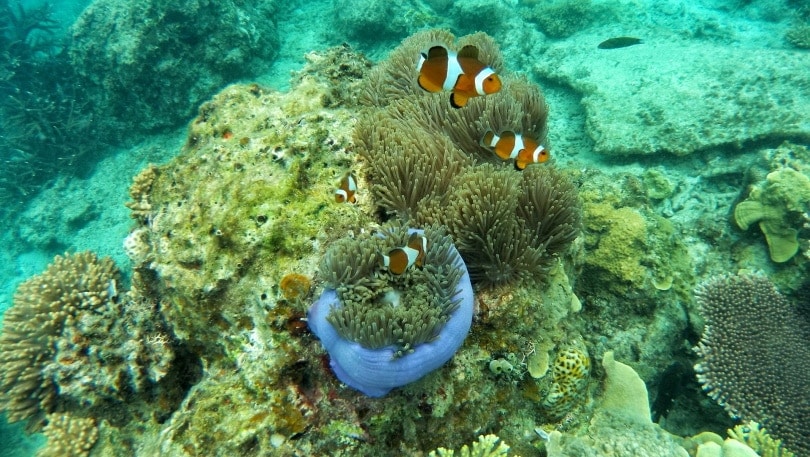
Though fish communicate in a variety of ways, sound is arguably the most effective in aquatic environments. Light is absorbed by water quickly, especially in murky or deep environments, limiting visual communication. Chemical communication is also limited in water and moves slowly.
Sound, however, moves rapidly underwater, at about 1,500 meters per second, and reaches farther distances than in air. This efficiency is heightened by low-frequency sound, which is commonly used with aquatic animals.
In most cases, fish use sound for spawning, breeding, and fighting. Sound may also identify predators and prey or help the school navigate to another location. Depending on the species, the swim bladder is typically responsible for producing sound. The sonic muscle contracts and relaxes, causing vibration in the swim bladder to produce sounds. Fish may also use hard parts of the body, such as the spinal vertebrae or the teeth, to create sounds.
Communication With Color

Color is a unique and highly developed form of communication for fish. As many people know, fish come in a range of vibrant colors and patterns, but they can also alter their coloration or vibrancy to signal different intentions.
Many fish species can darken their color or brighten their hues to communicate emotions, such as aggression or sexual receptivity, while others can change their colors to imitate other fish. Bright colors and patterns may be used as a warning sign to predators that the fish is venomous.
Communicating with Bioluminescence
Bioluminescence, a chemical reaction that produces light, is a beautiful and unique form of communication that’s almost exclusively found in marine organisms.
Plenty of deep-sea fish species are bioluminescent, such as the famous anglerfish. Named for its bioluminescent appendage, most people are familiar with the anglerfish’s massive head, sharp, thin teeth, and long appendage with a glowing ball on the end. The anglerfish uses this appendage to attract and prey on smaller fish.
In addition to hunting for prey, bioluminescence may be used to attract mates, defend against predators, or recognize other fish in the dark depths. Most bioluminescent fish can flash their light organs for a few seconds, but the number of light organs and the colors produced can vary.
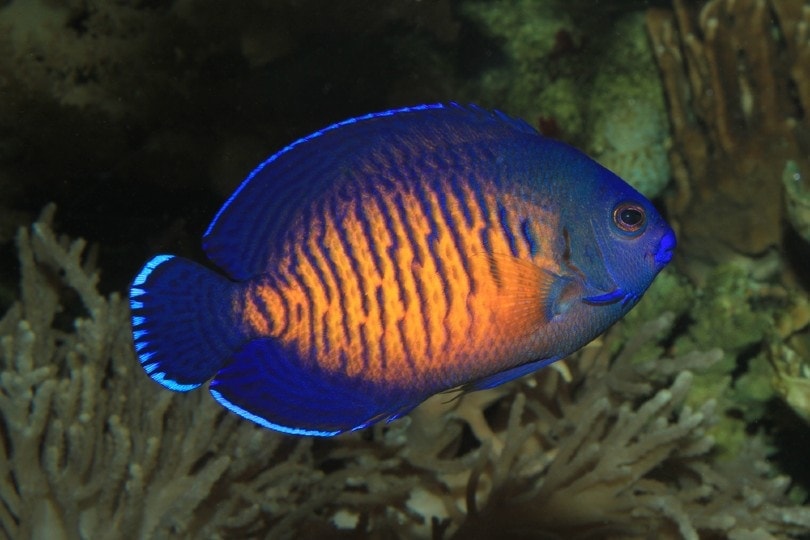
Communicating with Electrical or Chemical Impulses
Though less common, some fish have electrical organs that can transmit strong electrical impulses, known as electrocommunication. These are usually reserved for predators as a warning, but some fish use electrocommunication for courtship and mating, submission, and aggression.
When we think about fish with electrical impulses, the electric eel comes to mind. This impressive fish has three specialized electrical organs that comprise most of its body, creating both powerful and weak electrical impulses for navigation, hunting, defense, and communication.
Weakly electric fish also use electrocommunication. Weakly electric fish have both electric organs to create an electric field and electroreceptors to receive electrical impulses. These fish can interpret the message using waveforms, delay, frequencies, and other unique aspects of communication.
Communicating With Smell
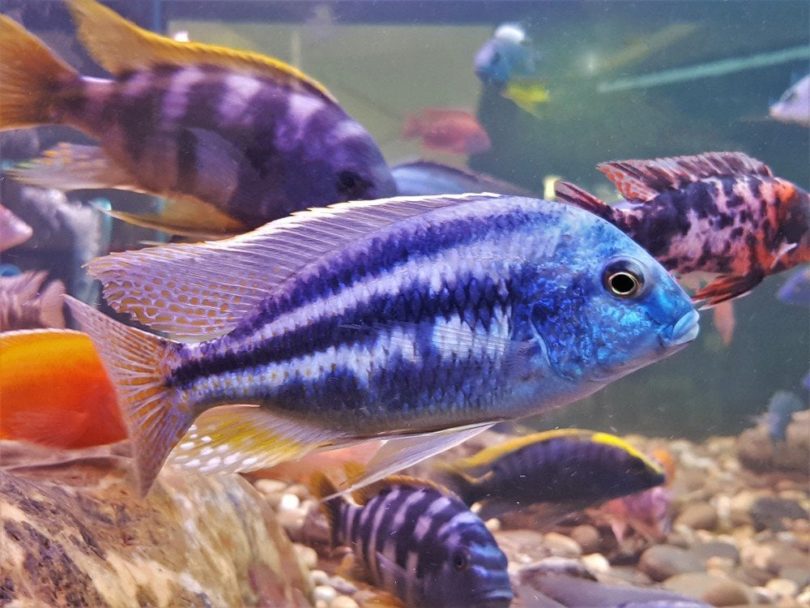
Though we don’t know much about fish communicating with smell, we know that some fish use this form of communication to send chemical signals for specific messages. Cichlids, for example, use urine to boost their defensive or aggressive posturing against rivals or threats. Some fish secrete pheromones to signal sexual receptivity to available mates nearby.
Final Thoughts
Despite the limitations of the environment, fish find innovative ways to communicate messages to each other, predators, and prey. Whether in pitch-black depths of the ocean or a shallow freshwater stream, there’s a whole world of drama and romance among the fish inhabitants.
Featured Image Credit by Vlad Siaber, Shutterstock

